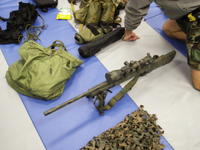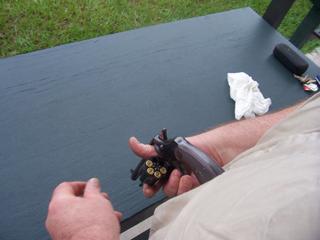On October 12, 2000 at 1118 hrs a small boat approached the USS Cole, moored in Aden, Yemen for refueling, and detonated a bomb, killing 17 of our shipmates and wounding 39 others. Built in Pascagoula, MS and commissioned in 1996, the Cole is named for a Marine Corps machine-gunner killed on “Iwo Jima” in 1945. Fifty-five years after that epic battle, 17 young sailors, male and female, serving their nation would be killed by suicide bombers intent on bringing their Islamo-Facist global jihad against the West.
On this 5th anniversary, let us remember those who gave their all:
Hull Maintenance Technician 2nd Class Kenneth Clodfelter
Electronics Technician Chief Petty Officer Richard Costelow
Mess Management Specialist Seaman Lakeina Francis
Information Systems Technician Seaman Timothy Lee Gauna
Signalman Seaman Cherone Louis Gunn
Seaman James Rodrick McDaniels
Engineman 2nd Class Marc Ian Nieto
Electronics Warfare Technician 2nd Class Ronald Owens
Seaman Lakiba Nicole Palmer
Engineman Fireman Joshua Langdon Parlett
Fireman Patrick Howard Roy
Electronics Warfare Technician 1st Class Kevin Shawn Rux
Mess Management Specialist 3rd Class Ronchester Santiago
Operations Specialist 2nd Class Timothy Lamont Saunders
Fireman Gary Graham Swenchonis Jr.
Ensign Andrew Triplett
Seaman Craig Bryan Wibberley
True patriots are like those on the USS Cole that gave of themselves for our freedom, for our way of life. For our children’s safety tomorrow, they gave their lives. Each night we sleep in safety underneath a "blanket of freedom" only because those who wear our nation's uniform are standing ever vigilant ready to give their lives in defense of our liberty just as these sailors did on October 12, 2000. And everyone that enjoys the freedom that we have in America, should stop and say a prayer for the families of the sons and daughters that were taken from us and for those who were wounded. We also give thanks to those sailors who brought that terrible situation under control and praise them for their courage and selfless devotion to duty in such a tragic event.
At the Memorial Service for the USS Cole in Norfolk, Va. on October 18, 2000, speaking to the families of those killed, their fellow shipmates, and President Clinton, Admiral Robert J. Natter CINCLANTFLT stated,
"Today we gather and pause as a nation, as a Navy, and as a family to remember and honor our shipmates on the Cole. We remember and honor their courage, and we remember and honor their service. But most of all, we remember and honor their answering of that highest call, and we remember and honor their ultimate sacrifice. Mr. President, ladies and gentlemen, when it comes time for our response, remember the Cole."The sailors of the USS Cole live in our hearts; they live in our souls. Never forget those who died, never forget those who killed them...remember the Cole.
 On Sunday morning at about half-past six a.m., October 23, 1983, the Marines of 1st Battalion / 8th Marine Regiment were about to wake up to the nightmare of their lives.
On Sunday morning at about half-past six a.m., October 23, 1983, the Marines of 1st Battalion / 8th Marine Regiment were about to wake up to the nightmare of their lives. The Beirut Memorial outside Camp Lejeune, N.C., home of the 22nd & 24th MEU's
The Beirut Memorial outside Camp Lejeune, N.C., home of the 22nd & 24th MEU's








